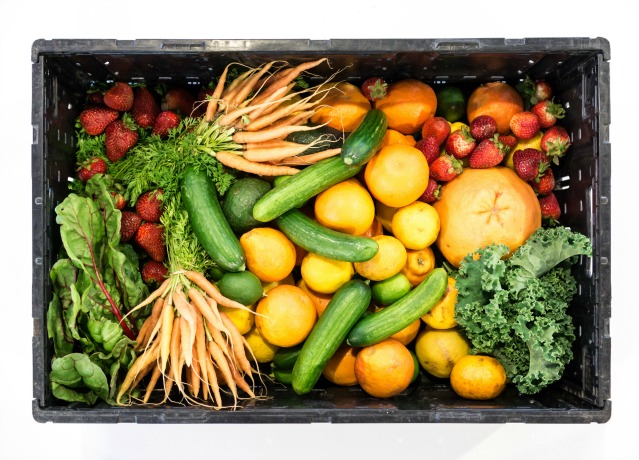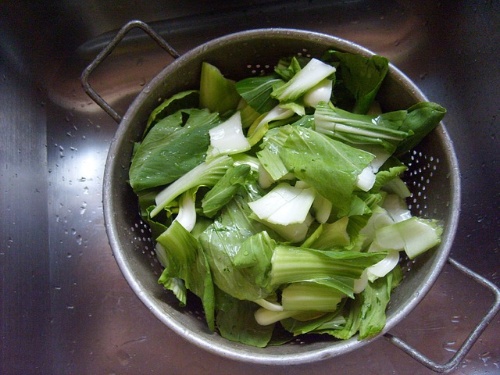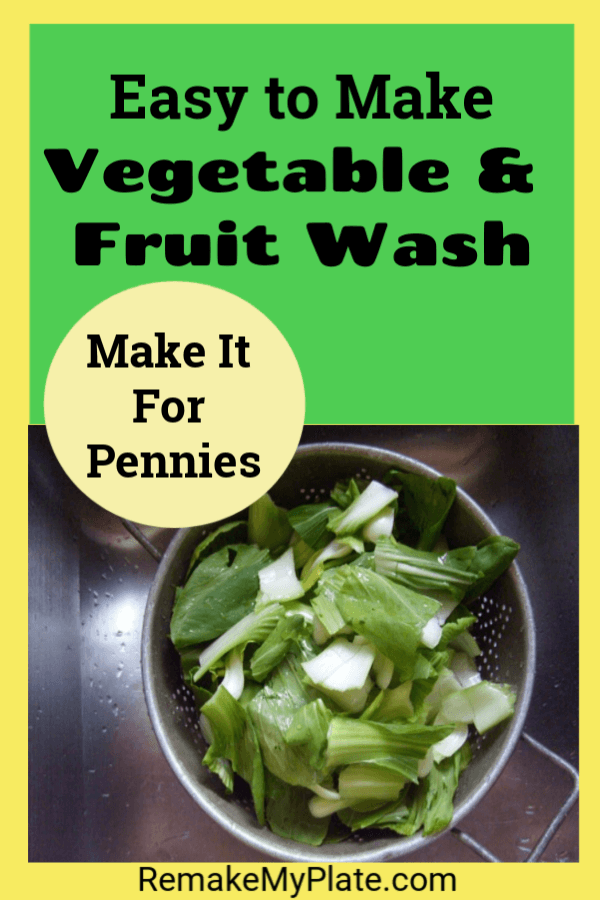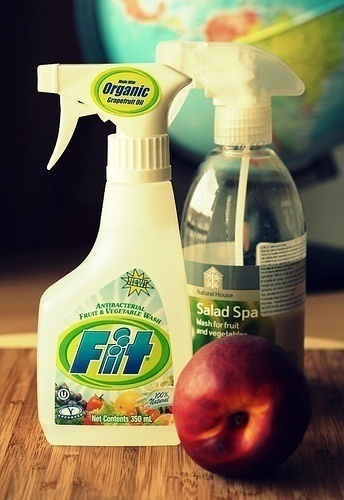During the summer I like to visit the local farmers market to pick up fresh vegetables and fruits. Often times these vegetables have been picked the night before or even the morning that they are going to be heading off to the market. This means that they have not been washed as well as the ones you see on display in your local grocery store.
But don’t be fooled by the appearance of the grocery store vegetables and fruits. While they may not have bits of dirt on them it doesn’t mean that they don’t need to be cleaned.
Personally I give all the vegetables and fruits I buy a good washing before eating. I have no problems giving my farmers market produce as extra scrub if it means better quality and taste.
Why Should Vegetables and Fruits Be Washed?

There are a number of reasons to wash your vegetables and fruits. Washing will help to remove any dirt and debris that is on the outside of the produce. It can help to remove bacteria, including E.coli, from the surface. Most of the bacteria comes from the soil that they are grown in. Some can be picked up during the shipping process. It’s always advisable to wash everything before you eat it.
It’s also advisable to wash those vegetables and fruits that you are going to cut open to only eat the insides. Think of things such as squash and melons. You don’t end up eating the tough outside rind. Usually you cut them open to eat the insides. But, if you don’t wash the outside, you can cut through the skin and expose the internal parts to the bacteria present. A quick washing will help remove the outside bacteria before you begin cutting the squash or melons up.
Washing your produce also helps to reduce any pesticide residue that may be on the outside.
According to the Centre for Science and Environment (CSE) washing vegetable and fruits with 2% of salt water will remove most of the contact pesticide residues that normally appear on the surface of the vegetables and fruits. Almost 75 to 80 percent of pesticide residues are removed by cold water washing.
How To Wash Your Vegetables and Fruits

If you check in your local grocery store, usually where all the produce is located, you’ll see one of many commercially available vegetable washes. I’m sure they all work just fine but they cost a small fortune. They make all kinds of claims such as they remove bacteria. Well so does water! Studies from the University of Maine have shown that tap water does as good a job or better. When produce is rinsed thoroughly, water can remove 98 percent of bacteria.
If you are looking to make your own vegetable and fruit wash then here are a few simple recipes to try. They are made with items that you most likely have around your home and they cost next to nothing to make!
Homemade Vegetable and Fruit Wash/Spray
-
1 tablespoon lemon juice
-
1 tablespoon baking soda
-
1 cup of water
Place all of the ingredients into a spray bottle and gently shake to mix. Spray on your fruits and vegetables and allow it to sit for 5 minutes then rinse under water.
Homemade Vegetable and Fruit Soak
-
1/2 cup of vinegar
-
2 tablespoons of salt
Fill a clean sink with water and add in the vinegar and salt. Mix with your hands. Place your fruit and vegetables in the water and allow to soak for 10 to 15 minutes. You can use a soft brush to scrub any fruits and vegetables that have a firm skin. Don’t forget to wash fruits such as melons before cutting them open. After soaking, rinse under fresh water.
Other tips:
-
Don’t forget to clean and sanitize your refrigerator produce draw.
-
Don’t soak mushrooms. They will absorb the soaking water. To clean them simply run under water to remove any debris.
-
You can use both the spray as well as the soak if desired.
-
Empty spray bottles can easily be found at your local hardware store. They can also be found in beauty supply shops.
The Best Ways to Wash Leafy Greens

Begin by separating the leaves and soaking them in cool water for a few minutes. You can also soak them in the vinegar soak for a few minutes and then follow this by rinsing them with clean water. When you are done place them in a strainer or colander to get the water off then dry them with a clean towel or a salad spinner.
Don’t forget to clean your salad spinner off with soapy water when your done using it. Sure it seems that it only got wet with the water from the produce you just rinsed off. But if there was any bacteria left on them this might transfer it to the spinner which will then pass it along when used again.
Other Ways to Keep Your Vegetables and Fruits Safe
-
Wash your hands with soapy water before and after handling vegetables and fruits (or any food).
-
Clean your counter top and cutting board to prevent transferring bacteria to other items.
-
Use a vegetable brush to clean away debris on the surface. Also give the vegetables and fruits with a lot of nooks and crannies (broccoli, cauliflower, grapes, etc) a scrub.
-
Delicate berries such as raspberries and blackberries should not be soaked. They will become mushy. Instead put them in a colander and spray with water to clean them.
-
Help to prevent food borne illnesses by helping to reduce the chances of you and your family being exposed to harmful bacteria. Always wash your vegetables and fruits!

[mc4wp_form id=”3690″]
Disclosure: The above post may contain affiliate links. I may earn a small commission from purchases made through these links, at no additional cost to you. Anything recommended on this website is a products I have used and loved. Thank you for supporting Remake My Plate and allowing me to share my experiences with you.
